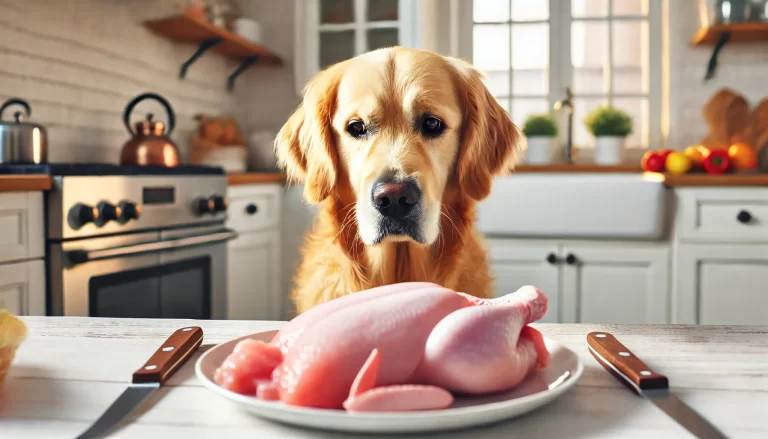My Dog Ate Chocolate but Is Acting Fine – Should I Be Worried?
Chocolate is a well-known toxic food for dogs, yet many pet owners find themselves in a dilemma when their dog eats chocolate but appears to be acting normal. Is it possible that your dog will be fine, or is there a hidden danger? In this comprehensive guide, we’ll explain what happens when dogs eat chocolate, potential delayed symptoms, and what to do if your dog consumes chocolate.
Is Chocolate Bad for Dogs?
Yes, chocolate is toxic to dogs. The main reason is the presence of theobromine, a chemical compound similar to caffeine. While humans can metabolize theobromine quickly, dogs process it much more slowly, allowing it to accumulate to dangerous levels in their system.
Why Is Theobromine Dangerous for Dogs?
Theobromine affects a dog’s nervous system, heart, and kidneys. Depending on the amount ingested, it can cause mild symptoms like restlessness and vomiting or severe complications such as seizures and cardiac arrest.

My Dog Ate Chocolate but Seems Fine – What Should I Do?
If your dog has eaten chocolate but is acting fine, don’t assume they are safe. The effects of chocolate poisoning can be delayed by several hours, sometimes up to 6-12 hours after ingestion.
Steps to Take Immediately:
-
Determine the Type and Amount of Chocolate
Different types of chocolate contain varying levels of theobromine. Dark chocolate and cocoa powder have the highest toxicity, while milk chocolate and white chocolate contain lower amounts. -
Check Your Dog’s Weight
The toxic dose of theobromine varies by size. Small dogs are at higher risk, while larger dogs may tolerate small amounts better. -
Use a Chocolate Toxicity Calculator
You can find online calculators that estimate the risk based on your dog’s weight and the type of chocolate consumed. -
Monitor for Symptoms
Even if your dog seems fine initially, watch closely for signs of chocolate poisoning, including:-
Vomiting
-
Diarrhea
-
Restlessness
-
Excessive thirst
-
Rapid heart rate
-
Tremors or seizures
-
-
Call Your Veterinarian
If your dog has ingested a toxic amount, seek veterinary advice immediately. Your vet may recommend inducing vomiting or other treatments to prevent complications.
How Much Chocolate Is Toxic to Dogs?
The toxicity level depends on the dog’s size and the type of chocolate ingested.
| Type of Chocolate | Theobromine Content (mg/oz) | Toxic to Small Dogs (Under 20 lbs) | Toxic to Large Dogs (Over 50 lbs) |
|---|---|---|---|
| White Chocolate | 0.1 mg/oz | Low Risk | Low Risk |
| Milk Chocolate | 44-58 mg/oz | Moderate Risk | Mild Risk |
| Dark Chocolate | 130-450 mg/oz | High Risk | Moderate Risk |
| Baking Chocolate | 390-450 mg/oz | Very High Risk | High Risk |
| Cocoa Powder | 400-800 mg/oz | Extremely High Risk | Very High Risk |
A dose of 100 mg of theobromine per kilogram of body weight is potentially fatal for dogs.
What Happens If a Dog Eats Chocolate?
Mild Cases (Small Amounts of Milk Chocolate)
-
Mild digestive upset
-
Slight increase in heart rate
-
Restlessness or hyperactivity
Moderate Cases (Larger Amounts or Dark Chocolate)
-
Vomiting and diarrhea
-
Increased heart rate
-
Excessive panting
-
Muscle tremors
Severe Cases (Baking Chocolate or Cocoa Powder)
-
Severe agitation
-
Rapid or irregular heartbeat
-
Seizures
-
Collapse or coma
Treatment for Chocolate Poisoning in Dogs
If your dog eats chocolate, treatment depends on the amount consumed and the symptoms displayed.
At-Home First Aid (Only If Recommended by a Vet)
-
Inducing Vomiting: If caught early (within 1-2 hours), a vet may advise giving hydrogen peroxide (3% solution) to make your dog vomit.
-
Activated Charcoal: This can prevent theobromine absorption in the digestive tract.
Veterinary Treatment
If symptoms appear, your vet may:
-
Administer IV fluids to help flush toxins from the system
-
Use medications to control heart rate and seizures
-
Monitor heart function to prevent arrhythmias
How to Prevent Chocolate Poisoning in Dogs
-
Keep chocolate out of reach – Store all chocolate products in sealed containers.
-
Educate family members – Make sure kids understand that chocolate is harmful to dogs.
-
Train your dog – Teaching the “leave it” command can help prevent accidental ingestion.
-
Use dog-safe treats – If you want to give your pet a special snack, try dog-friendly alternatives.
FAQ: Chocolate Poisoning in Dogs
1. What if My Dog Ate Chocolate but Is Acting Normal After 24 Hours?
If your dog has gone 24 hours without symptoms, they are likely in the clear. However, always consult your vet if you’re unsure.
2. Can a Small Amount of Chocolate Kill a Dog?
A tiny bite of milk chocolate likely won’t be fatal, but baking chocolate or cocoa powder in even small amounts can be dangerous.
3. How Long After Eating Chocolate Will a Dog Get Sick?
Symptoms typically appear 6-12 hours after ingestion but can take up to 24 hours in some cases.
4. Can Dogs Build a Tolerance to Chocolate?
No, dogs do not develop a tolerance to theobromine. Repeated exposure increases toxicity risks.
5. What Are Safe Chocolate Alternatives for Dogs?
Carob is a dog-safe alternative that tastes like chocolate but contains no theobromine.
Final Thoughts
If your dog ate chocolate but is acting fine, don’t assume they’re safe. Monitor them closely for symptoms over the next 24 hours, and always consult your veterinarian if you’re unsure about their risk level. Early intervention can prevent serious complications and ensure your furry friend stays healthy.
By following these precautions, you can keep your pet safe from chocolate poisoning and enjoy peace of mind.







